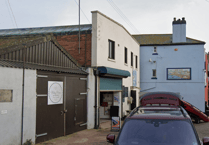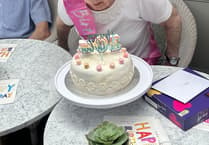SAMUEL VEALE, of Orchard Gardens, Teignmouth, writes:
I cannot speak as one of those head-in-the-sand, dyed-in-the-wool historians who live to breathe the past and seem to think everyone else should too, but I speak as a native Newtonian with a passing interest in old buildings, but not to the exclusion of all else.
I was interested to read Mr M Martyn's remarks regarding getting ideas to make Forde House earn its keep by implementing 'other things'.
I cannot understand why he feels so much interest should be generated by this property. after all, John Gaverock was only the abbot's steward until the dissolution of the monasteries and his building of Forde House, which his daughters sold in 1610, scarcely puts it in the same category as one of the large historic houses of England such as Longleat.
Admittedly it passed through many, mostly unremarkable, local hands by way of marriage or inheritance – eg William Waller, who married Jane Reynell in 1622 – but it is, at best, only a modest sized gentleman's des res, not even particularly architecturally pleasing to the eye.
Even Charles I only visited en route to Plymouth on September 15, 1625, when it was owned by Richard Reynell and again for two nights only on his way back.
True, Charles knighted Richard on his second visit and, apart from the usual rumours of secret passages and priest holes, unsubstantiated, I doubt the local working population of Newton Abbot would have been very interested in the politics of the time,
They would far rather have had Bradley Manor listed for some future historical interest. After all, it is the oldest house in the town, circa 15th century, and with a most fascinating list of previous owners. Its association with the wool trade in all its aspects including the mills, is totally fascinating.
William of Orange might have proclaimed himself king at the site of St Leonard's Tower but, here again, the real accolade of this time in history must go to Brixham, where he actually landed in 1688 and where they have a fine statue erected to mark the occasion.
The various tenants of Forde House did little to keep it in good repair and it even descended to 'trade', selling antiques, until bought by Teignbridge in 1978. It is, of course, already open on certain days for a limited and none too interesting tour of the house and grounds and, apart from the panelling over the fireplace, the publicly shown rooms are drab and uninspiring.
I would have thought the best thing to have done would be to move the council out into some more appropriate concrete office block more suited to this work and give the entire building to the National Trust who, if it accepted it, would at least keep it in good repair and even make something of it, although I fear such a comparatively small property in a provincial town is not usually their thing.
I suppose the council realises it is sitting on an absolute goldmine development-wise if they knocked the whole edifice down and built a giant housing estate, or industrial one.



